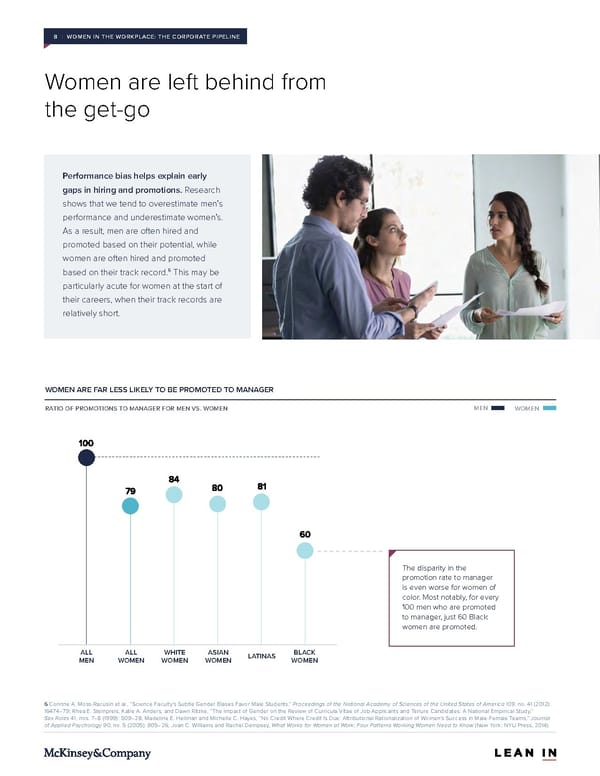8 | WOMEN IN THE WORKPLACE: THE CORPORATE PIPELINE Women are left behind from the get-go Performance bias helps explain early gaps in hiring and promotions. Research shows that we tend to overestimate men’s performance and underestimate women’s. As a result, men are often hired and promoted based on their potential, while women are often hired and promoted 6 This may be based on their track record. particularly acute for women at the start of their careers, when their track records are relatively short. WOMEN ARE FAR LESS LIKELY TO BE PROMOTED TO MANAGER RATIO OF PROMOTIONS TO MANAGER FOR MEN VS. WOMEN MEN WOMEN The disparity in the promotion rate to manager is even worse for women of color. Most notably, for every 100 men who are promoted to manager, just 60 Black women are promoted. ALL ALL WHITE ASIAN LATINAS BLACK MEN WOMEN WOMEN WOMEN WOMEN 6 Corinne A. Moss-Racusin et al., “Science Faculty’s Subtle Gender Biases Favor Male Students,” Proceedings of the National Academy of Sciences of the United States of America 109, no. 41 (2012): 16474–79; Rhea E. Steinpreis, Katie A. Anders, and Dawn Ritzke, “The Impact of Gender on the Review of Curricula Vitae of Job Applicants and Tenure Candidates: A National Empirical Study,” Sex Roles 41, nos. 7–8 (1999): 509–28; Madeline E. Heilman and Michelle C. Hayes, “No Credit Where Credit Is Due: Attributional Rationalization of Women’s Success in Male-Female Teams,” Journal of Applied Psychology 90, no. 5 (2005): 905–26; Joan C. Williams and Rachel Dempsey, What Works for Women at Work: Four Patterns Working Women Need to Know (New York: NYU Press, 2014).
 Women in the Workplace Page 12 Page 14
Women in the Workplace Page 12 Page 14